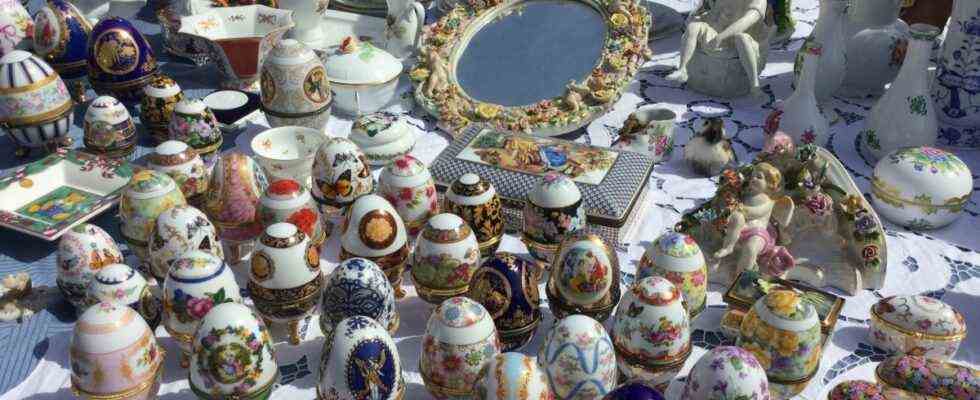The graph, painted jet black on paper, has a few points, but there is only one direction, the one up. The statisticians report a “sudden increase” in exports for 1948 and at least a “strong” one for the first half of 1950. Above all, the buyers in one country seem to have taken a hit with porcelain made in Bavaria. “Italy is currently the best customer in Selb,” summed up the statisticians.
At that time, the observations were only supposed to mark the beginning. Today they are witnesses of a time when nobody spoke of Bavaria as a car or high-tech country. The term china country would have been more appropriate; at least around Selb, the “center of the Bavarian porcelain industry”, as statisticians called the town in Upper Franconia back then. Your 70-year-old report sheds light on the beginning of a rapid ascent – and thus a piece of the sometimes forgotten Bavarian economic history.
The State Office for Statistics has dug up the lines of yore for its monthly journal. After the end of the Second World War, the economy was in the process of being rebuilt in 1950. Above all, the international business was idle. When trying to open up it again, however, Bavarian companies have been lagging behind their colleagues in the rest of Germany. For example, at that time the export quota – i.e. the proportion of goods that are sold abroad – in German mechanical engineering was 22 percent. The Bavarian mechanical engineering industry, on the other hand, only achieved 17.4 percent. Bavaria was only a leader in a few sectors: in musical instruments, for example, or in glass. But nowhere was the difference as great as in fine ceramics. The Bavarian companies achieved an export quota of 26.8 percent – ten points more than the national average.
The buying mood of the Italians also contributed to this. In the first half of 1950 alone, almost 22 percent of all Bavarian ceramics exports went down to the boot. More than 22 million D-Marks were turned over in this way. Colored tableware in particular turned out to be a box-office hit. The fact that Bavarian porcelain had a good reputation before the war should not have hindered sales.
The statistics say nothing about the following boom years. It ends in 1950 – fittingly in the year in which Philip Rosenthal joined the family company of the same name in Selb. This is still considered one of the most famous porcelain manufacturers to this day. It was then that his best years began. A newspaper article for 1959 noted that Rosenthal was able to increase exports by 18 percent compared to the previous year. And in the 1960s, Bauhaus founder Walter Gropius designed a tea set and the glassworks in Amberg for the company: a stretch of concrete and glass, more a nave than an industrial hall and also known as the “cathedral”.
And today? The same and a few other manufacturers still exist. But the importance of the industry has declined, and competition from the Far East is strong. In an industry report for 2019 – the last one created before the Corona crisis – porcelain is downgraded to a sub-item in the statistics; as a small part of the branch “Manufacture of glass and glassware, ceramics, processing of stones and earth”. At the time, it had a total turnover of 9.3 billion euros, the export quota was 24.3 percent. For comparison: Mechanical engineering came to 116.5 billion euros. More than 65 percent of its products went abroad.
Of course, statisticians cannot foresee any structural change in 1950. For her at that time the high export quota is above all proof of the efficiency of the Bavarian porcelain industry: She understands that “not only meets the requirements of foreign countries with regard to the shape and size of her products, but also the tastes of foreigners in terms of sampling and coloring Customize “.

